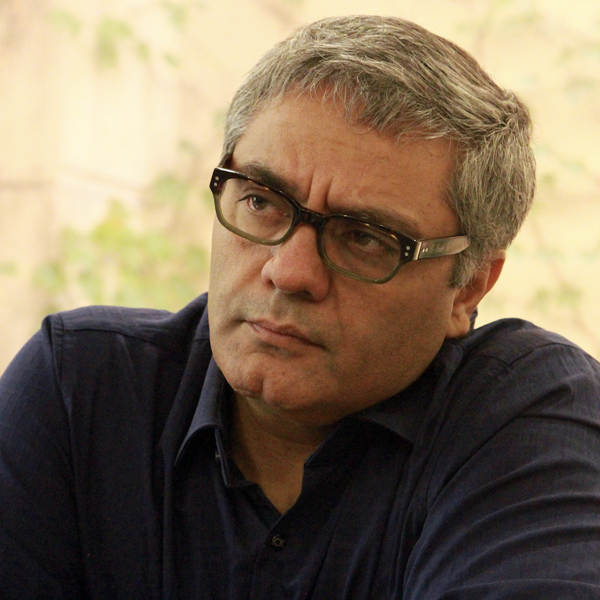Editor’s Note: This review originally published during the 2023 Cannes Film Festival. “The Old Oak” will be released in U.S. theaters on April 5, 2024.
Three-dimensional characterization is a casualty of Ken Loach’s ongoing social justice project. Yet the 86-year-old idealogue’s tireless stocktaking of the human toll exacted by a Conservative British government – in power since 2010 – has been of political consequence. His 2016 Palme d’Or winner “I, Daniel Blake”, about the crushing UK benefits system, had its title projected onto the Houses of Parliament and became a rallying shorthand amongst campaigners for reform.
According to Loach, “The Old Oak” will be his last film. And given that his brand of morality plays have filled a void in terms of a genuinely revolutionary cinema, it feels precious to take umbrage at something as cosmetic as a lack of artistry. Indeed, my disenchanted reaction to “The Old Oak” and its sincere account of solidarity against the forces of anti-refugee racism, made me question whether taste matters during times of political desperation. If “The Old Oak” can be leveraged as a font of humanity in an era in which our Prime Minister and his ghoulish Home Secretary proudly parade the slogan ‘Stop The Boats’ does it really matter if its tendency to use characters exclusively as mouthpieces is dramatically tedious?
Set in a small, left-behind ex-mining town in the north of England, “The Old Oak” trades in broad-strokes sentimentality and diligent consciousness-raising. The year is 2016 and Syrian refugees are being housed in this enclave of County Durham. While some locals respond to their arrival with a barrage of racist taunts, others, like Tommy Joe Ballantyne (Dave Turner), landlord of a pub that is clinging on for dear life, take it upon themselves to offer a warmer welcome. TJ steps in when a young Syrian photographer Yara (Ebla Mari ) has her camera smashed by a yob in a Newcastle United football shirt. Their friendship becomes the nucleus of a cultural exchange that slowly fans out to include more of the townspeople.
The antagonists of the piece are a Greek chorus of racist oafs — TJ’s regulars and the lifeblood of his pub. The most fallen of these men is TJ’s oldest friend Charlie, a man who in his bitterness has turned to scapegoating refugees. In one early scene, Charlie and his cronies give voice to the damage caused by housing developers who have bought up neighboring properties at a low price, driving down the value of their homes and trapping them there indefinitely. Loach wants to establish that these people have legitimate grievances, but have committed to the vile error of punching down instead of punching up.
The film flirts with nuance when it shows local kids watching with envy as a young Syrian girl is gifted a second-hand bicycle. Much as in America’s Rust Belt states, there are a generation of working-class white people with vanishingly few prospects. However, Loach is not interested in delving into a complex stew of class and racial tensions, for his antagonists are presented as pantomime villains, with dialogue transcribed from a playbook of racist cliches. There is much mumbling, muttering, aggressive pint swigging, and dramatic ultimatums issued as The Old Oak pub becomes the center of a turf war.
Yara proves to be a heartfelt community activist, awakening in TJ long dormant urges to match her efforts. Loach’s regular screenwriter, Paul Laverty, writes some reluctance into this personal growth, contriving a clunky backstory that serves to load a metric tonne of significance onto his pet pooch, Marra. Given that larger, more dangerous dogs roam the neighborhood, one instantly fears for this tiny terrier.
As the narrative plods on, the lack of subtext or texture or psychological complexity in the dialogue begins to grate. First time actor Mari brings heartfelt vivacity to Yara, making her a plausible driving force for social integration. Nonetheless, she is saddled with lines that are pure exposition, like, “My children will never see Palmyra Temple, built by the Romans and destroyed by the Islamic State in 2015.” Loach made a formidable documentary “The Spirit of ‘45” (2013) about the hopeful post-war years that gave birth to the NHS and the heartbreak that has followed its stealth dismantling by a profit-hungry government. Documentary is a logical form for rhetorical filmmaking. Perhaps his recent trilogy “(I, Daniel Blake”, “Sorry We Missed You” and now “The Old Oak”) are documentaries masquerading as fiction, for supplying facts is given far greater weight than character or story.
Another factual lesson shoehorned into the mix is that of the 1984 Miners Strike. This year of proud working-class resistance is enshrined by TJ in a cluttered backroom of The Old Oak with walls decorated by black and white photographs of the strikers and their supporters. One of these photos has a caption that inspires Yara to organize free meals so that Syrian refugees and the poor locals can all come together to break bread and build bonds. She asks TJ if they can use the backroom of The Old Oak for this event, setting in motion a subplot revolving around the viability of repairing the plumbing and electricity. Credit to Ken, he does not glamourise event planning.
There are a handful of standout scenes, such as when Yara puts together a slideshow of the photos she has taken of the townspeople. The predominantly non-professional cast respond with touching wonder at their image seen through an artist’s eyes. Although a lot of the film feels like a breathless box-ticking exercise designed to Include Every Pertinent Fact, the chemistry between Turner and Mari leads to a relationship rarely seen in cinema: a platonic friendship between an older man and a younger woman born of mutual respect. The mighty oak that is Ken Loach may be retiring, but here’s hoping he’s scattered some acorns.
Grade: B
“The Old Oak” premiered in competition at the 2023 Cannes Film Festival.






